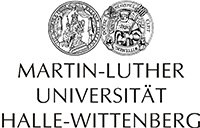Ultrafast electrons in magnetic oxides: a new direction for spintronics?

Special metal oxides could one day replace semiconductor materials that are commonly used today in processors. Now, for the first time, an international team of researchers from Martin Luther University Halle-Wittenberg (MLU), the University of Kaiserslautern and the University of Fribourg in Switzerland was able to observe how electronic charge excitation changes electron spin in metal oxides in an ultrafast and inphase manner. The study was published in the journal “Nature Communications”.
In modern semiconductor electronics, the first key step in every transistor is to lift electrons over the so-called band gap in the semiconductor. Electrons have to move through a material that is, in actual fact, non-conductive.
“After they have been excited across the band gap, the moving electric charges of the electrons generate the currents that are used in information processing. These currents can cause processors to become hot, leading to energy loss,” explains Professor Wolf Widdra from the Institute of Physics at MLU.
Spintronics attempts to solve this problem with the help of so-called spin. This is the intrinsic angular momentum of an electron that produces the magnetic moment, thereby generating the magnetism that is used in information processing. The coupling of electronic and magnetic properties determines the functionality.
“Magnetic oxides are an important class of materials for spintronics because they don’t transfer electron current, only magnetic information,” says Widdra, who led the study as part of the joint Collaborative Research Centre CRC/TRR 227 “Ultrafast Spin Dynamics” at MLU and Freie Universität Berlin. Until recently, however, it hadn’t been clear how the electron transfer across the band gap coupled with the spin of the magnetic oxide.
The team has now successfully observed this process and has developed a new theory for it. Groups of theoretical and experimental physicists joined forces to tackle this issue.
Using a state-of-the-art, ultra-short pulse laser, the researchers were able to excite an electron to lift it across the band gap in nickel oxide. They also observed how the information was then transferred to the magnetic system. This enabled the team to identify a previously unknown ultrafast coupling mechanism that occurs on a femtosecond scale, i.e. a quadrillionth of a second. “The complex many-body properties generated through the excitation of the electron by the laser have revealed this surprising observation but also made us think long and hard about how to interpret it correctly,” adds Widdra.
According to the physicist, the findings now pave the way for ultrafast spintronics. This should facilitate the development of new ultra-fast storage systems and information technologies in the future.
The study was funded by the Deutsche Forschungsgemeinschaft (German Research Foundation, DFG), the Swiss National Science Foundation and the European Research Council.
Wissenschaftliche Ansprechpartner:
Professor Wolf Widdra
Institute of Physics / Surface Science / MLU
CRC/TRR 227 “Ultrafast Spin Dynamics”
phone: +49 345 55-25360
email: wolf.widdra@physik.uni-halle.de
Originalpublikation:
Gillmeister, K. et al. Ultrafast coupled charge and spin dynamics in strongly correlated NiO. Nature Communications (2020). https://doi.org/10.1038/s41467-020-17925-8
Weitere Informationen:
https://pressemitteilungen.pr.uni-halle.de/index.php?modus=pmanzeige&pm_id=5081
Media Contact
All latest news from the category: Physics and Astronomy
This area deals with the fundamental laws and building blocks of nature and how they interact, the properties and the behavior of matter, and research into space and time and their structures.
innovations-report provides in-depth reports and articles on subjects such as astrophysics, laser technologies, nuclear, quantum, particle and solid-state physics, nanotechnologies, planetary research and findings (Mars, Venus) and developments related to the Hubble Telescope.
Newest articles

An Endless Loop: How Some Bacteria Evolve Along With the Seasons
The longest natural metagenome time series ever collected, with microbes, reveals a startling evolutionary pattern on repeat. A Microbial “Groundhog Year” in Lake Mendota Like Bill Murray in the movie…

Witness Groundbreaking Research on Achilles Tendon Recovery
Achilles tendon injuries are common but challenging to monitor during recovery due to the limitations of current imaging techniques. Researchers, led by Associate Professor Zeng Nan from the International Graduate…

Why Prevention Is Better Than Cure—A Novel Approach to Infectious Disease Outbreaks
Researchers have come up with a new way to identify more infectious variants of viruses or bacteria that start spreading in humans – including those causing flu, COVID, whooping cough…



